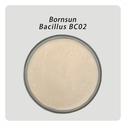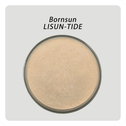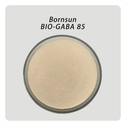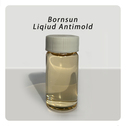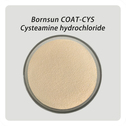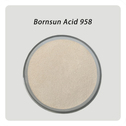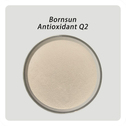Product Test Report
Product test reportdetailCaseCurrent Location:Test Reports >
back >>
.png)
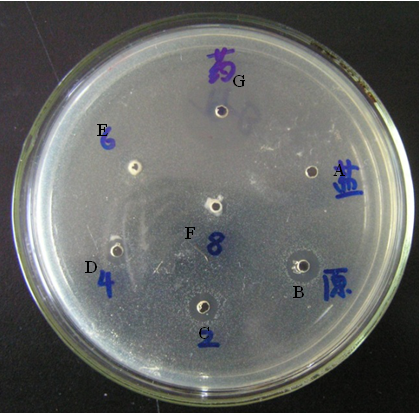
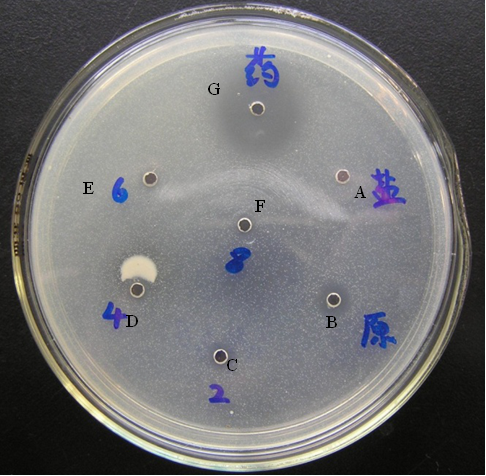
MIC test report from Institute of Animal Husbandry and Veterinary in Tianjin
2014.11.10
1 Materials
1.1 Instruments
Biological safety cabinet (Singapore,Esco), centrifuge (Bekman), high-pressure sterilizer (Japan,Sanyo), ultraviolet spectrophotometer (Shanghai), incubator, shaking incubator, perforex, flat plate, cuvette,
inoculating loop, alcohol burner, et al.
1.2 Bacterial strain
Salmonella pullorum(CVCC 79-13); streptococcus suis TJ-S2
These two strains were separated, identified and stored by Institute of Animal Husbandry and Veterinary in Tianjin.
1.3 Culture mediums and reagents
LB fluid culture medium, LB agar plates, nutrition agar plates, bovine serum, normal saline, sterilized water.
1.4 Drugs
Assayed drug: Antibacterial Peptide 100 g(40000 U/g), provided by Shanghai Bangcheng Biological Science & Technology CO., Ltd.
Control drug: Florfenicol 5 ml, provided by Chengdu Kunhong Animal Pharmaceutical Co., Ltd, batch number is 20110710.
2 Methods
2.1 Strain recovery
Freeze-dried strains of testing strains were dissolved in 1 ml normal saline, bacterial suspension was picked and streaked on
nutrient agar plates which containing bovine serum, then cultured at 37 ℃ for 20-24 h.
2.2 Preparation of strain fluid
2-3 colonies were picked and inoculated onto 50 ml LB fluid medium containing 5% bovine serum, then were cultured shakily on the
table concentrator, rotary speed was 220 rpm, cultured at 37 ℃ for 16-18 h, then stored at 4℃.
2.3 Absorbance(OD600nm) adjustment
The liquid culture of bacteria was poured into a sterile centrifuge tube and centrifuged at 3000 rpm for 10 mins, then discarded the
supernatant, resuspended the precipitation with nomal saline and adjusted the concentration properly, measured the absorbance
values (OD600nm) with spectrophotometer and adjusted the OD value to 0.23, used the sterile saline as blank control.
2.4 Culture medium preparation
Heating the LB agar culture medium to melt, then cooling it to 40-45℃, adding 5% bovine serum into the cooled medium, afer mixed, adding 5 μl bacterial fluid (OD=0.23) and mixed them again,
pouring the mixture into a glass plate till it became cool. Using a perforex to punch some holes (diameter=2.7 mm) in the agar
medium.
.png)
2.5 Preliminary experiment(selection of inhibitory concentration range of Antibacterial Peptide)
Precisely weighing 1.0 g Antibacterial Peptide and dissolving it into 9 ml sterile water to make of 10% Antibacterial Peptide solution.
Diluting the solution into 10, 100 and 1000 times by coubling dilution method. 5 μl of stock and different diluted sollutions were added
into prepared holes on LB agar plate, meanwhile, using florfenicol as positive control and normal saline as negative control.
Concentration numbers were well marked at the bottom of plate, putting the plate into incubator for 16 to 20 h at 37℃.
Measuring the inhibition zone diameters to determine the used concentration of Antibacterial Peptide in this test.
2.6 Selecting inhibitory concentration of Antibacterial Peptide
2.6.1 Operation method
Different concentrations of solutions were prepared according to the results of preliminary experiment. Diluting the stock solution
(10% Antibacterial Peptide) into 2, 4, 8, 16 and 32 times by coubling dilution method. 5 μl of five different diluted sollutions were
added into prepared holes on LB agar plate, meanwhile, using florfenicol as positive control and normal saline as negative control.
Concentration numbers were well marked at the bottom of plate, putting the plate into incubator for 16 to 20 h at 37℃. Each strain had
three repeated parallel test with three plates, and the final diameter result was the mean of three parallel test diameter. The highest
diluted time of Antibacterial Peptide which could inhibit the growth of bacterial was the minimum inhibitory concentration (MIC) of A
ntibacterial Peptide.
2.6.2 Inhibitory criterion of Antibacterial Peptide
When the inhibition zone diameter was bigger than the diameter of sample hole(2.7 mm), we thought this concentration of Antibacterial
Peptide could inhibit the growth of bacterial, otherwise, the concentration could not inhibit the growth of bacterial.
3 Results
3.1 Results of preliminary experiment
Two test strains were used for preliminary experiment, results were showed in table 1, 10% stock Antibacterial Peptide could inhibit
the growth of Salmonella pullorum(CVCC 79-13); streptococcus suis TJ-S2. 10 to 1000 times dilution of the stock didn’t have the
inhibitory effects.
Table1: Inhibitory effects of Antibacterial Peptide in preliminary experiment(unit:mm)
|
Diluted times of Antibacterial Peptide
|
Salmonella pullorum
|
streptococcus suis
TJ-S2
|
||
|
D
|
Antibacterial results
|
D
|
Antibacterial results
|
|
|
10% stock solution
|
8.0
|
+
|
6.0
|
+
|
|
10 times dilution of stock
|
2.7
|
-
|
2.7
|
-
|
|
100 times dilution of stock
|
2.7
|
-
|
2.7
|
-
|
|
1000 times dilution of stock
|
2.7
|
-
|
2.7
|
-
|
Remark: (1)“+”means the results are positive (this concentration of Antibacterial Peptide could inhibit the growth of test bacterial),
the same as belows; (2)“D”means the diameter of inhibitory zone.
3.2 Results of the minimum inhibitory concentration (MIC) of Antibacterial Peptide
Diluting the stock solution(10% Antibacterial Peptide) into 2, 4, 6 and 8 times according to the preliminary test and carrying inhibitory effects
test. Results were showed in table 2 and 3 and figure 1 and 2.
3.2.1 Inhibitory test results of Antibacterial Peptide on Salmonella pullorum
The results in table 2 and figure 1 were showed that, 10% stock sollution and its 2, 4 times dilution had the obvious inhibitory effects
on Salmonella pullorum, however, 6 and 8 times dilution had no inhibitory effects on growth of Salmonella pullorum.
Table 2: Inhibitory test results of Antibacterial Peptide on Salmonella pullorum(unit: mm)
|
Number of
culture plate
|
positive control
|
negative control
|
dilution times
|
|||||||||||
|
dilude 10 times
|
dilude 20 times
|
dilude 40 times
|
dilude 60 times
|
dilude 80 times
|
||||||||||
|
D
|
Antibacterial
effects
|
D
|
Antibacterial
effects
|
D
|
Antibacterial
effects
|
D
|
Antibacterial
effects
|
D
|
Antibacterial
effects
|
D
|
Antibacterial
effects
|
D
|
Antibacterial
effects
|
|
|
1
|
18
|
+
|
2.7
|
-
|
8.0
|
+
|
6.0
|
+
|
5.0
|
+
|
2.7
|
-
|
2.7
|
-
|
|
2
|
18
|
+
|
2.7
|
-
|
8.3
|
+
|
6.5
|
+
|
4.5
|
+
|
2.7
|
-
|
2.7
|
-
|
|
3
|
18
|
+
|
2.7
|
-
|
8.1
|
+
|
5.5
|
+
|
5.0
|
+
|
2.7
|
-
|
2.7
|
-
|
|
Mean Value
|
18
|
+
|
2.7
|
-
|
8.13
|
+
|
6.0
|
+
|
4.83
|
+
|
2.7
|
-
|
2.7
|
-
|

Figure 1. Antibacterial Effect of Anti-baterial peptide on Salmonella
(Remark: A:negative control group, B:dilude 10 times, C:dilude 20 times, D:dilude 40 times, E:dilude 60 times, F:dilude 80 times,
G:positive control group)
3.2.1 Inhibitory test results of Antibacterial Peptide on Streptococcus suis TJ-S2
The results in table 2 and figure 1 were showed that, 10% stock sollution and its 2 times dilution had the obvious inhibitory effects on
Streptococcus suis TJ-S2, however, 4, 6 and 8 times dilution had no inhibitory effects on growth of Streptococcus suis TJ-S2.
Table 3: Inhibitory test results of Antibacterial Peptide on Streptococcus suis TJ-S2(unit: mm)
|
Number of
culture plate |
positive control
|
negative control
|
dillution times
|
|||||||||||
|
dilude 10 times
|
dilude 20 times
|
dilude 40 times
|
dilude 60 times
|
dilude 80 times
|
||||||||||
|
D
|
Antibacterial
Effects
|
D
|
Antibacterial
Effects
|
D
|
Antibacterial
Effects
|
D
|
Antibacterial
Effects
|
D
|
Antibacterial
Effects
|
D
|
Antibacterial
Effects
|
D
|
AntiBacterial
Effects
|
|
|
1
|
21.0
|
+
|
2.7
|
-
|
6.0
|
+
|
4.5
|
+
|
2.7
|
-
|
2.7
|
-
|
2.7
|
-
|
|
2
|
20.5
|
+
|
2.7
|
-
|
5.5
|
+
|
4.5
|
+
|
2.7
|
-
|
2.7
|
-
|
2.7
|
-
|
|
3
|
21.0
|
+
|
2.7
|
-
|
5.0
|
+
|
4.0
|
+
|
2.7
|
-
|
2.7
|
-
|
2.7
|
-
|
|
Mean Value
|
20.8
|
+
|
2.7
|
-
|
5.5
|
+
|
4.33
|
+
|
2.7
|
-
|
2.7
|
-
|
2.7
|
-
|

Figure 2. Antibacterial Effect of Anti-baterial peptide on Streptococcus suis TJ-S2
4 Conclusion
Based on the above test results, MIC of Antibacterial Peptide on Salmonella was 40 times dilution solution; MIC of Antibacterial Peptide on
Streptococcus suis TJ-S2 was 20 times dilution solution.



